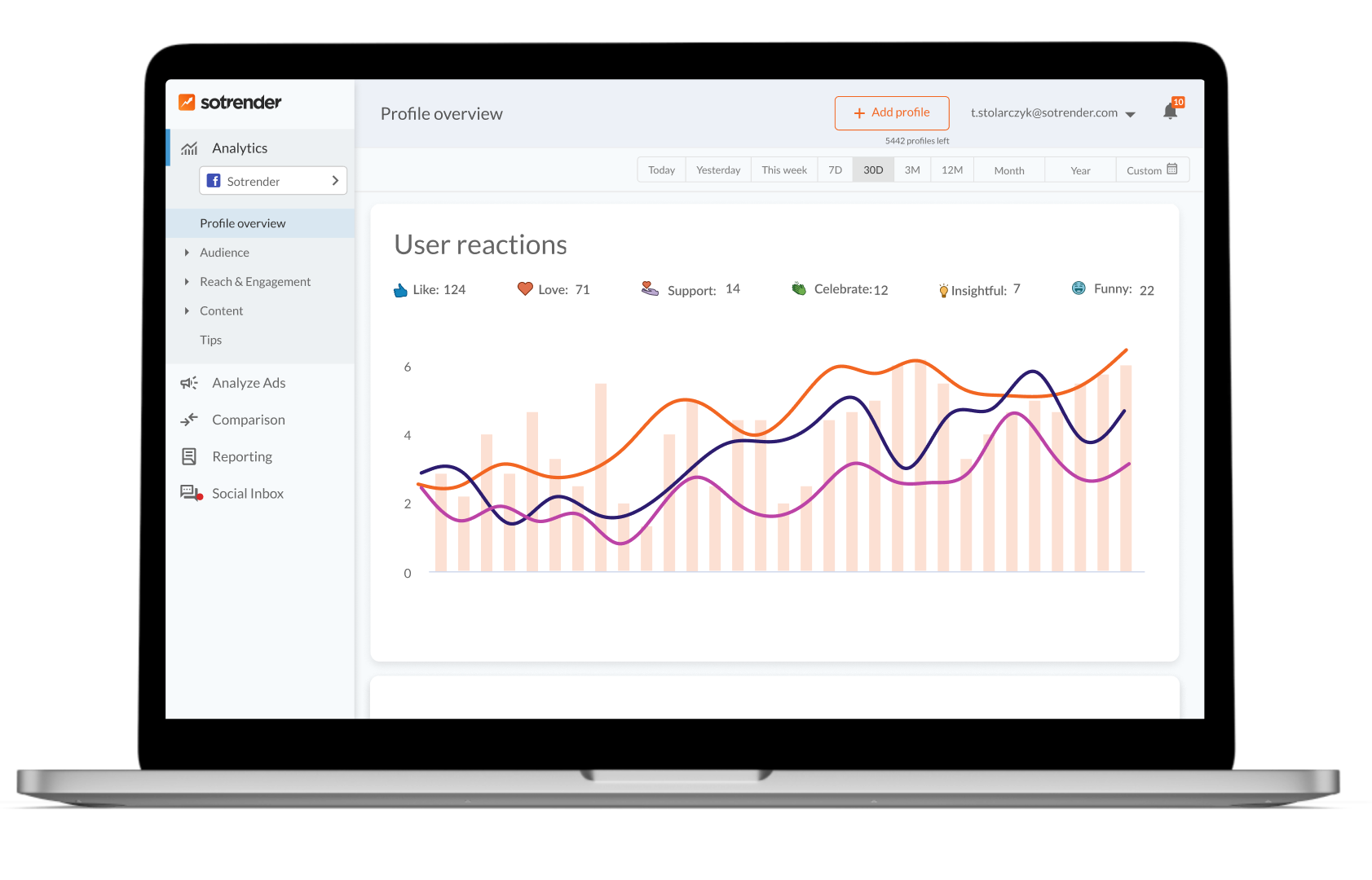Running an Instagram profile may seem easy at first. After all, it’s just about adding posts and Stories, right? 😉 An Instagram account audit can be applied to any public Instagram account, allowing you to assess and improve profiles that are publicly accessible.
If you’ve worked in the industry for a while, you know that’s far from the truth. Running an Instagram profile is a full-time job. From strategy and content creation to performance analysis, there’s a lot you need to take care of. And from time to time, you should also run an Instagram profile audit to monitor how your profile is doing overall. Audits are a crucial, ongoing process for optimizing and maintaining your Instagram presence.
Let’s break down what a complete Instagram account audit consists of and how to seamlessly conduct one.
What is an Instagram audit and why should you run one?
An Instagram audit is the process of assessing your overall Instagram performance. Regular audits are essential for ongoing optimization, especially for small business owners looking to improve their social media strategy. Conducting one will help you answer the following questions:
- Is my Instagram marketing strategy effective?
- Am I running my Instagram profile as it was originally planned?
- Are my goals being met?
- Is my profile appealing to my target audience?
- How does my profile compare to the competition?
It’s essential for you to know if you’re heading in the right direction, and running an Instagram profile audit will help you discover that.
Keep in mind that an Instagram account audit isn’t a one-time event, but should be part of your regular business routine. Conduct audits regularly, once or twice a year, to ensure your strategy stays effective.
Instagram profile audit – 7 steps to take
1. Analyze your overall profile appearance
Imagine you’ve never seen your profile before. Take your phone, open Instagram, and look at your profile.
What was your first impression?
Take your time and be honest with yourself about what you think about your profile. Does it look appealing? Would you hit the follow button as a new visitor? Does the content offer something of value?
Don’t neglect two elements – branding and tone of voice. You should easily notice if the communication on your profile is coherent both visually and voice-wise.
Also, pay attention to some basics and check if:
- The link in your bio is clear, clickable, and working. Make sure it aligns with your current campaigns and overall branding to maximize engagement and drive traffic.
- Your bio doesn’t need to be polished or updated.
- Your highlights are structured in a way that makes sense.
- You don’t follow too many accounts.
- It’s easy for a new follower to immediately know what your profile is about.
- Your profile picture is attention-grabbing.

2. Check your key growth metrics
Before you dive into the details regarding your performance, start by checking some basic but important stats.
These include, for example:
- Instagram profile growth data.
- Average reach and impression levels.
- Engagement rate metric.

To be able to assess if your account is performing well and growing at an expected pace, you’ll need to take a look at your KPIs and goals. We hope you have yours set. 😉
Gaining 1,000 new followers in the last six months may sound like a good result, but maybe you were aiming for 5,000? Without clearly defined (and ideally SMART) goals, it’s hard to tell if your strategy is actually working.
Obviously, your key metrics shouldn’t be checked once a year, but much more regularly, e.g., once a week. To smoothen and quicken this process, consider using a social media analytics tool. The best tools offer a user friendly interface and can automate much of the process, reducing the need for manually checking each metric. By using one, you’ll always have all the latest data at your fingertips.
If you’re not familiar with such tools, just take a look at the above example from Sotrender. You can also try a free instagram audit tool for a quick, no-sign-up evaluation of your Instagram account. This is a great way to get immediate insights into your performance without any commitment.
3. Dive deeper into user engagement
Engagement is currently what Instagram creators should be fighting for. And we’re not talking about likes, which are easy to manipulate, but about more valuable user actions.
What can you do to ensure your engagement is constantly growing? Analyze your historical data
When conducting an Instagram profile audit, analyze the following:
- Engagement rate.
- Engagement levels as a key metric to evaluate how your audience interacts with your content.
- Impressions and reach metrics over time.
- Top performing content.
- Share of user activities.
Again, with the use of a third-party analytics app, getting all this data will be a piece of cake.
For example, on the engagement rate chart in Sotrender, you can simply click on a peak (or on any date) to see what post was published that day and caused your audience to be so interested. It isn’t possible with just Instagram Insights.
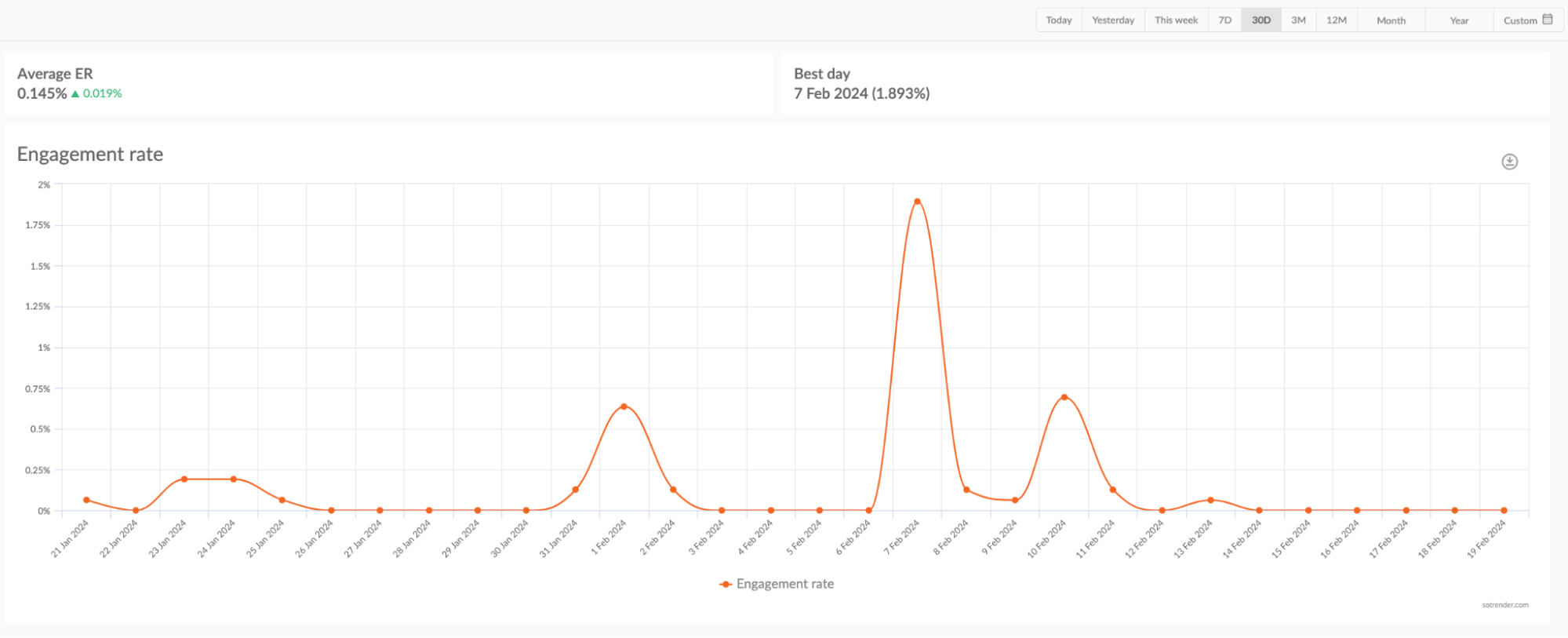
Why is diving deeper into user engagement so important?
We hope you’re aware that you don’t produce and publish content just for yourself. You do it to accomplish some business (or personal) goals. That’s why you should know if what you’re doing makes sense and is paying off.
Analyzing user engagement will enable you to understand your audience’s preferences and interests and help tweak your strategy based on what they liked the most. Monitoring and analyzing comments is crucial, as it provides qualitative insights into what content resonates most with your followers.
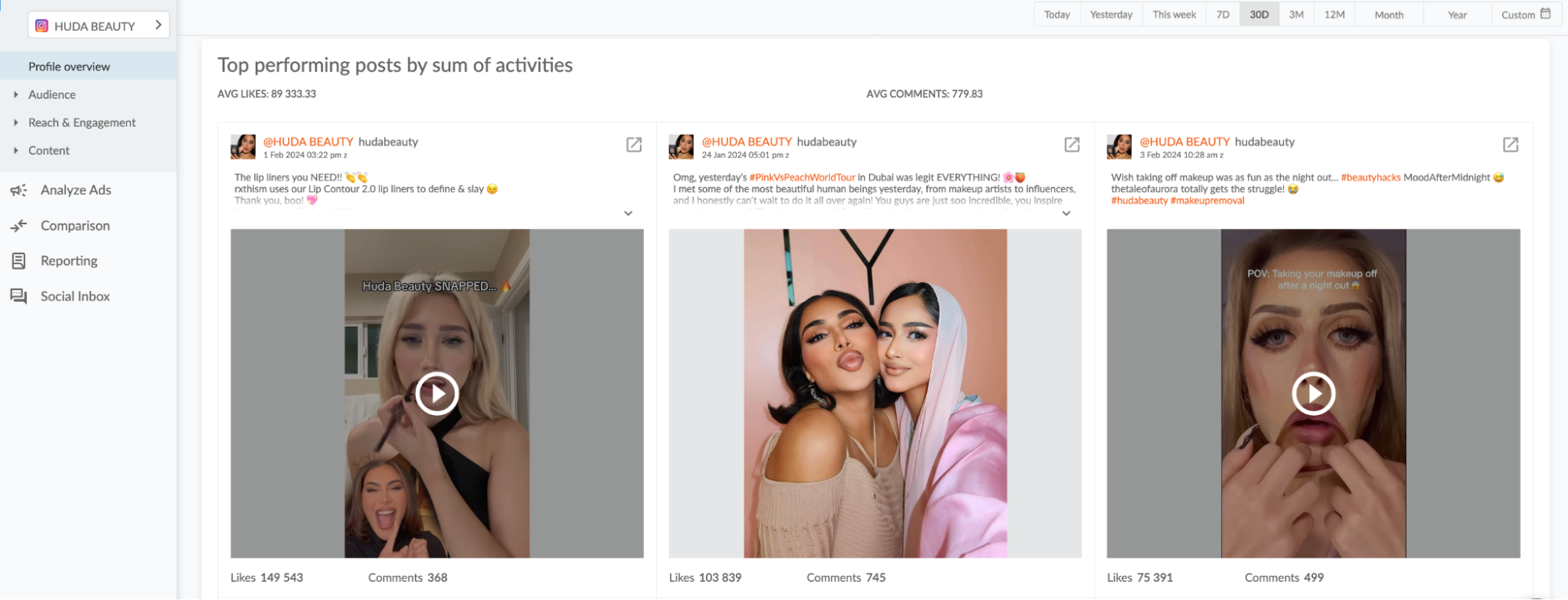
Also, if you’re not satisfied with how your Instagram followers were interacting with your content so far, you may need to make your content and copy more actionable.
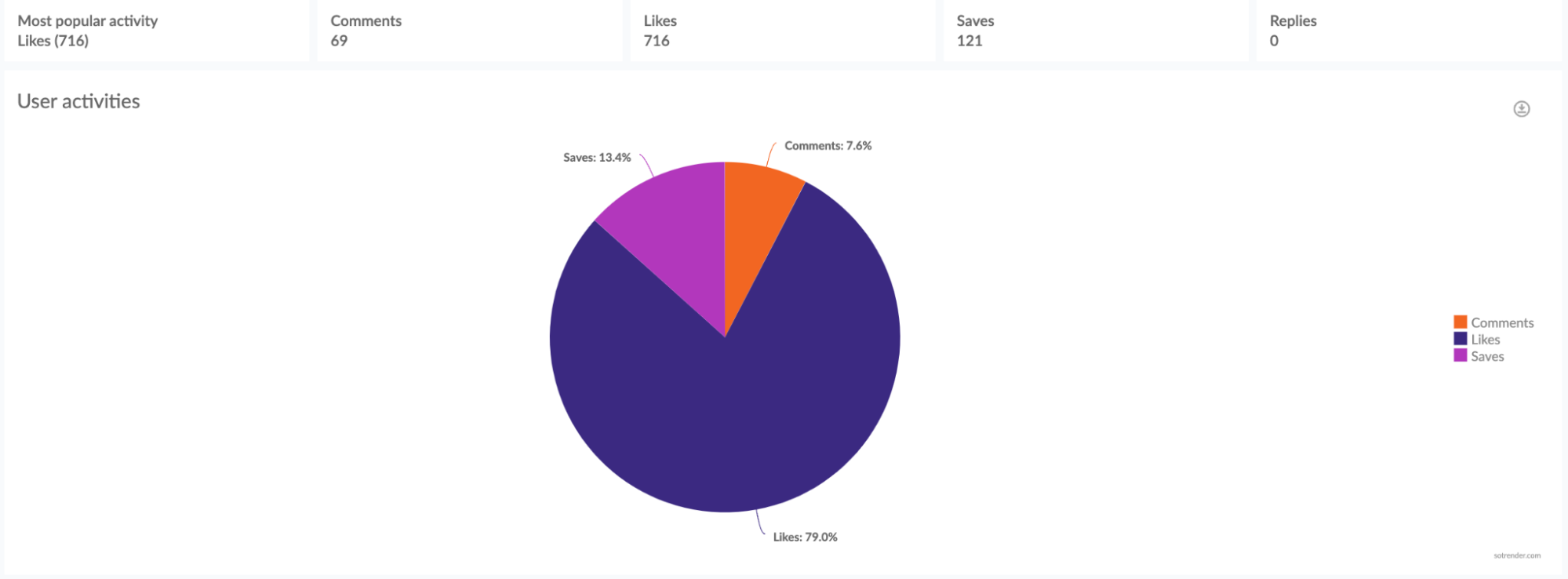
If your followers weren’t commenting or sharing your posts, they probably didn’t find them helpful, interesting, or funny enough. Encourage users to comment on your posts to boost engagement and gather feedback. Or maybe it wasn’t clear to them what your expectations were? 😉
Additionally, after reviewing your engagement rate, check for fake followers to ensure your engagement metrics reflect genuine audience interaction.
4. Review the content you share
As we’ve just discussed, your content is your greatest asset.
Once you know what your audience liked most on your profile, you should juxtapose these insights with your expertise.
Imagine this realistic situation.
Let’s say, you’re a psychologist. You spontaneously followed some funny trend and posted a Reel that went viral. You’re obviously thrilled about that, but is it something you’d like to continue doing? Does it represent your expertise? Do you want your audience to associate you with such content? Do you identify yourself with this Reel?
Answering these questions may be a ground-breaking discovery. Unless you’re a comic, you probably have more to offer than funny memes. (Not to mention that virals often don’t bring much long-term value).
Another thing to consider is whether the content you publish is in line with your branding (colors, characteristic graphic elements, etc.). Brands should ensure all content supports their overall marketing strategy. Additionally, review your use of Instagram hashtags to make sure they are relevant and help increase your content’s visibility.
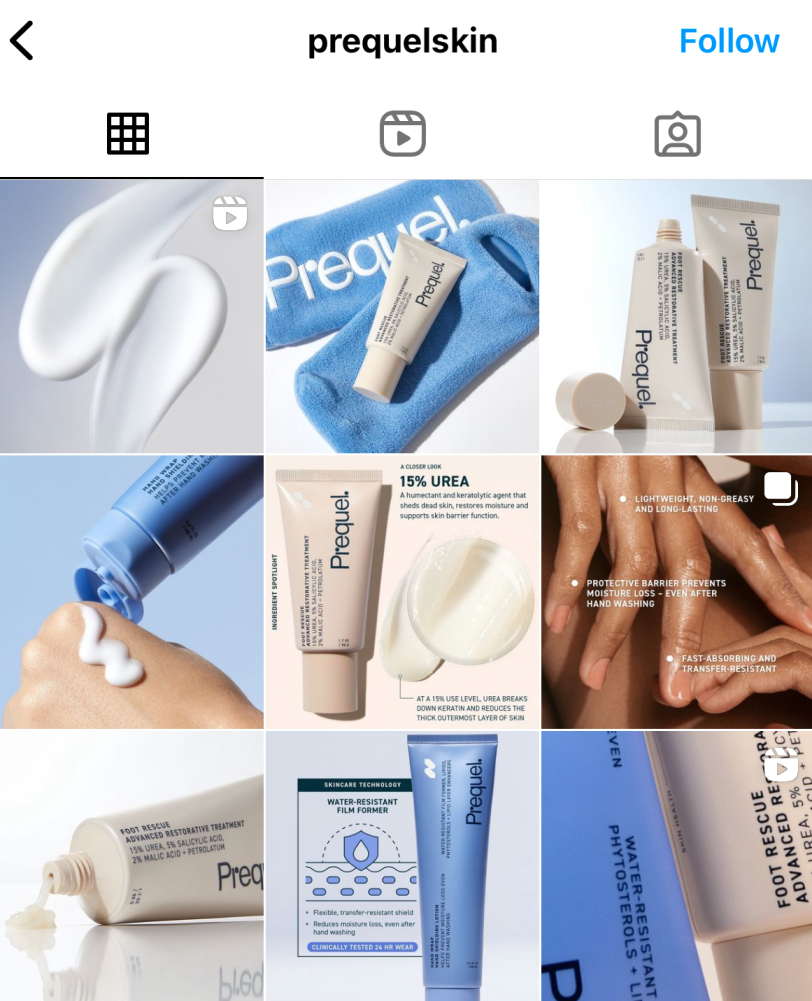
It’s common that in the everyday rush, things start to go awry and your marketing materials start to differ from one another. You may not notice it on a daily basis, but by auditing your Instagram presence regularly, you’ll be able to more easily spot it.
5. Monitor what your competition is up to
Even though we’re talking about your Instagram profile audit, keep in mind you’re not the only player on the market. Your target audience is probably following a few similar accounts, so you need to make sure that your profile stands out from the competition.
That’s why you also need to analyze how you stack up against your key competitors. Checking their profiles and stats will help you understand their strategy and focus, but also their strengths and weaknesses. Make sure to evaluate the Instagram accounts of your main competitors to assess their suitability for collaborations and ongoing performance.
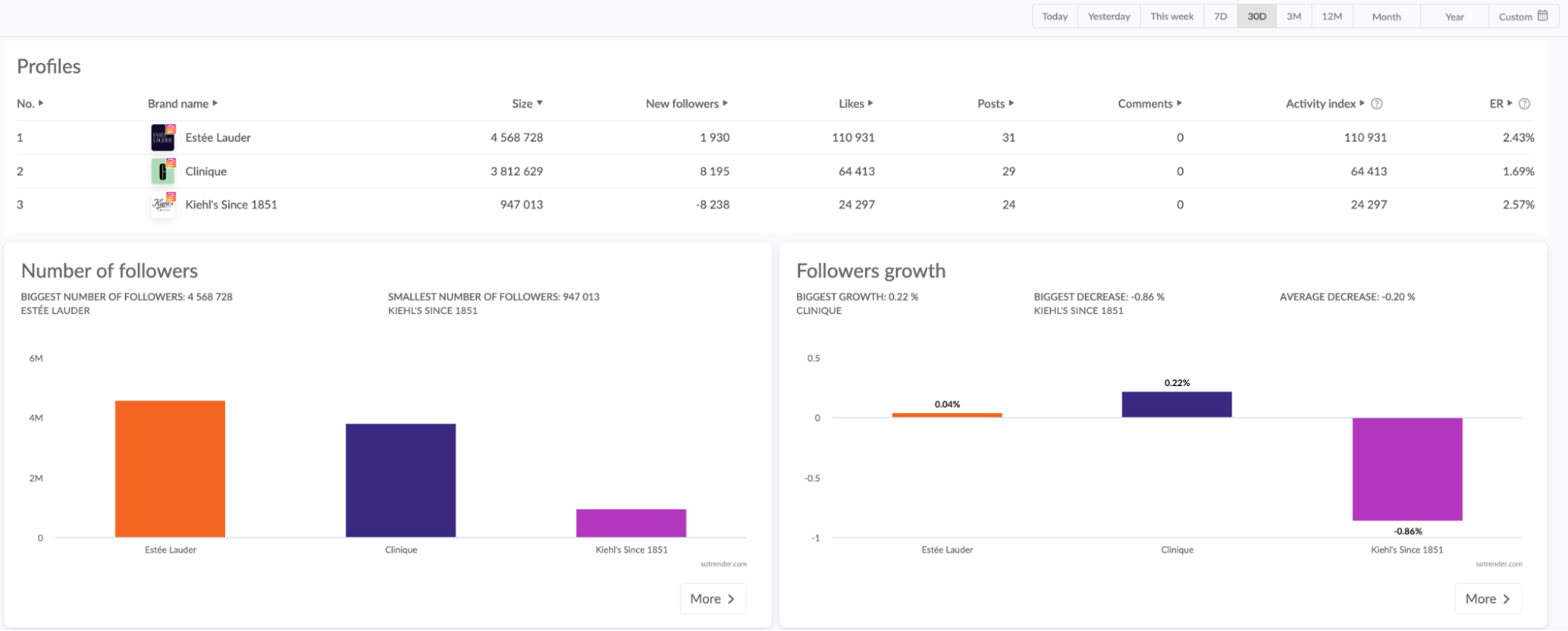
Also, compare their content to your own. Maybe you’ll conclude that what you do is too similar. Or that it’s much better (or worse).
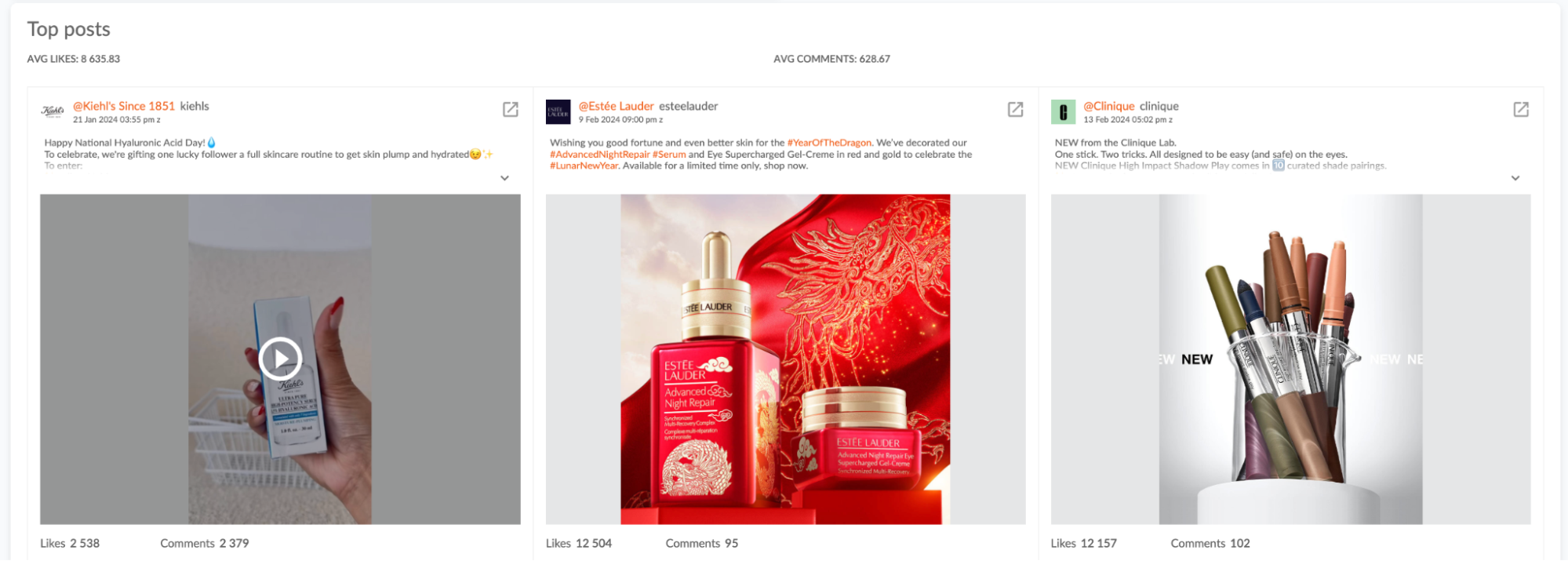
Competitor tracking isn’t about copying what they do – it’s about understanding the market and target audience preferences. And getting some inspiration, too. 😉
6. Review your resources
While researching, you’ll reach different conclusions. Eventually, you may want to change the way you do some things, or just try something new. For example, adding formats you haven’t used yet to your content calendar
However, you may realize that not everything you’d like to include in your Instagram strategy will be possible.
That’s why you also have to look up the resources available to you.
That includes:
- Your toolbox.
- Your budget.
- Human resources (AKA people).
- Your knowledge, skills, and abilities.
Imagine you want to focus more on Instagram ads. However, that would require an additional budget. If you don’t have it secured, there is no point in planning more paid activities.
In another scenario, you may want to start posting more video content, which you haven’t posted before. You’ll either have to learn how to create videos for Instagram and invest in some external tools, or hire someone to do that for you.
7. Track latest trends and technologies
Over the last couple of months, many trends have emerged and new technologies have become available.
The world of social media and digital marketing changes rapidly. It’s normal that, as a marketer or social media manager swamped with daily tasks, you’re not always up to date with what is happening in the industry. But you should be.
Taking advantage of the latest trends may help your Instagram profile grow faster by attracting new followers.
So what can you do now?
- Make sure that you’re familiar with what is trending on Instagram.
- See how your competitors take advantage of these trends.
- Review if you have used these trends already. If not, think if you’d like to and if they fit your strategy and profile aesthetics. You should never implement all trends – only the ones that have a chance to make a difference to your business.
- Make a plan on how you want to include selected trends in your strategy.
Not all trends will be worth your attention, no matter if they’re short-term or long-term. When doing your Instagram audit, decide which ones should be on your radar.
Recommended Instagram audit tools
There are many tools that you can use to run an Instagram profile audit. The best tools for Instagram audits offer a user friendly interface and can efficiently audit multiple instagram accounts, making them ideal for influencer marketers and businesses alike. Usually, these would be social media analytics tools or social media management tools. If you’re already using one, it probably has all the features you need to run an Instagram audit. You can also try a free instagram audit tool for a quick and easy assessment of your account.
Here are some tried and tested ones:
“Is using an external tool necessary to do an audit?” you may ask. Well, it’s not. However, it’ll speed up the process significantly. With a third-party tool, you’ll also get more insights that you probably won’t be able to realize when doing an audit manually.
How to create an Instagram audit report (and why you need one)
Any audit should be documented, so should your Instagram audit.
It’s obvious, but let’s not forget about it. First thing is to review your past audits when running a new one, just to have a broader perspective, but also to be able to see how things, both on your end and in the whole industry, have changed.
But the Instagram account audit you’ll run probably won’t be just for you.
It’s likely that you’ll need to share your findings with your boss, client, or coworkers. That’s why you’ll need a single document where all the data from your Instagram account audit will be summarized.
Social media analytics tools will come in handy again. These tools usually offer a reporting feature that will enable you to generate a complete social media report within minutes. No joke.
Head to Sotrender, which offers a 7-day free trial, and create your first report to see how easy it can be.
Ready to run your next Instagram profile audit?
Make audits a regular part of your Instagram strategy to stay ahead. You should now feel fully equipped to conduct your next (or first ;)) Instagram audit. Not much is needed other than your awareness and a few spare hours.
Building a brand on Instagram is a process, and brands benefit greatly from regular Instagram audits. Don’t neglect running an Instagram audit – it can only do good things for your Instagram marketing effectiveness.
Happy auditing!

